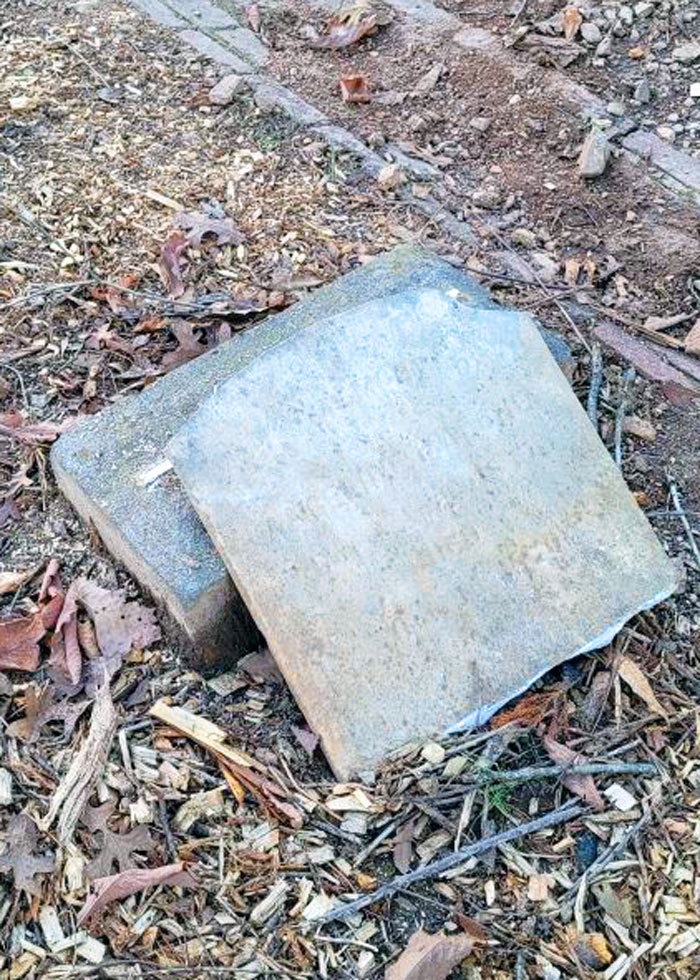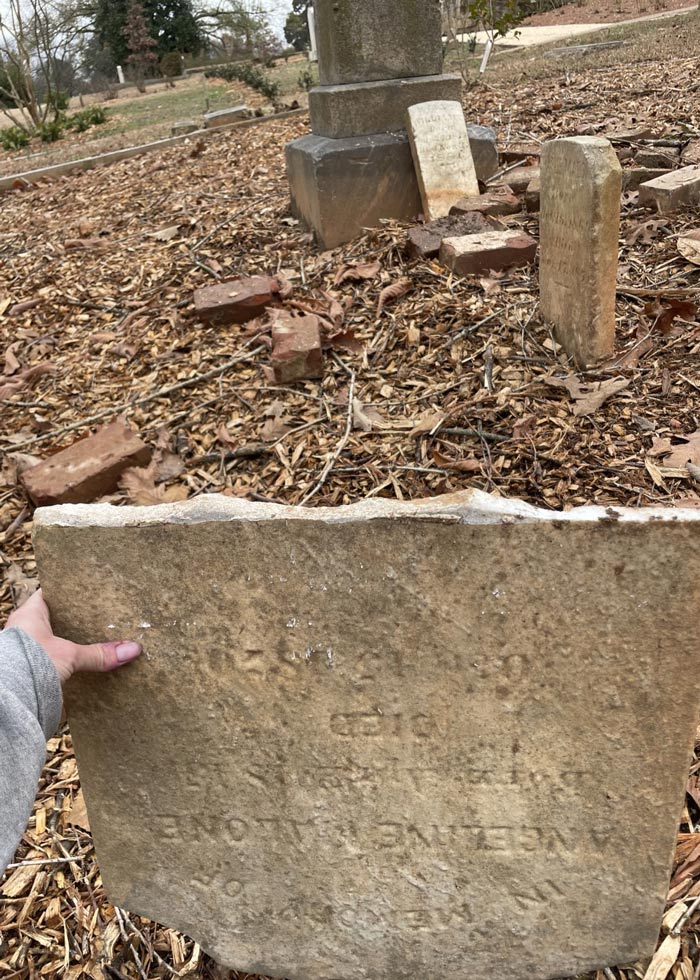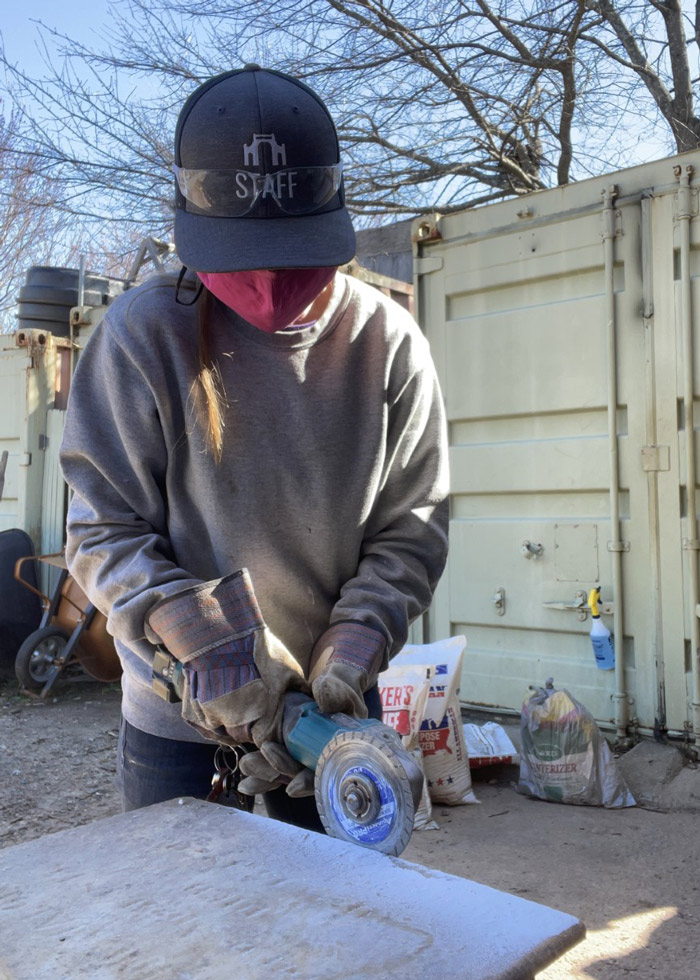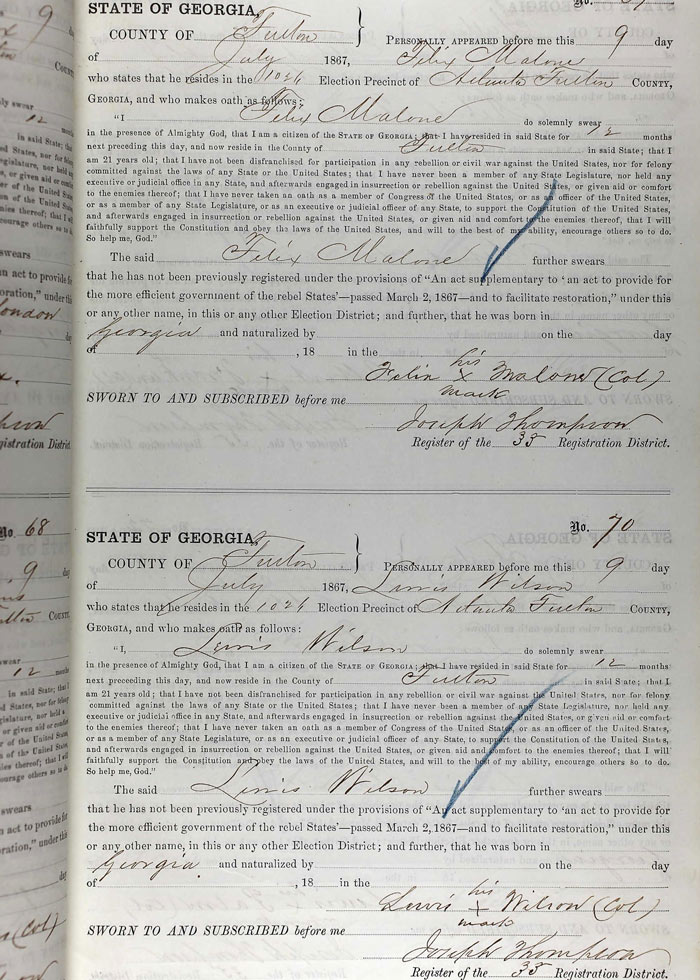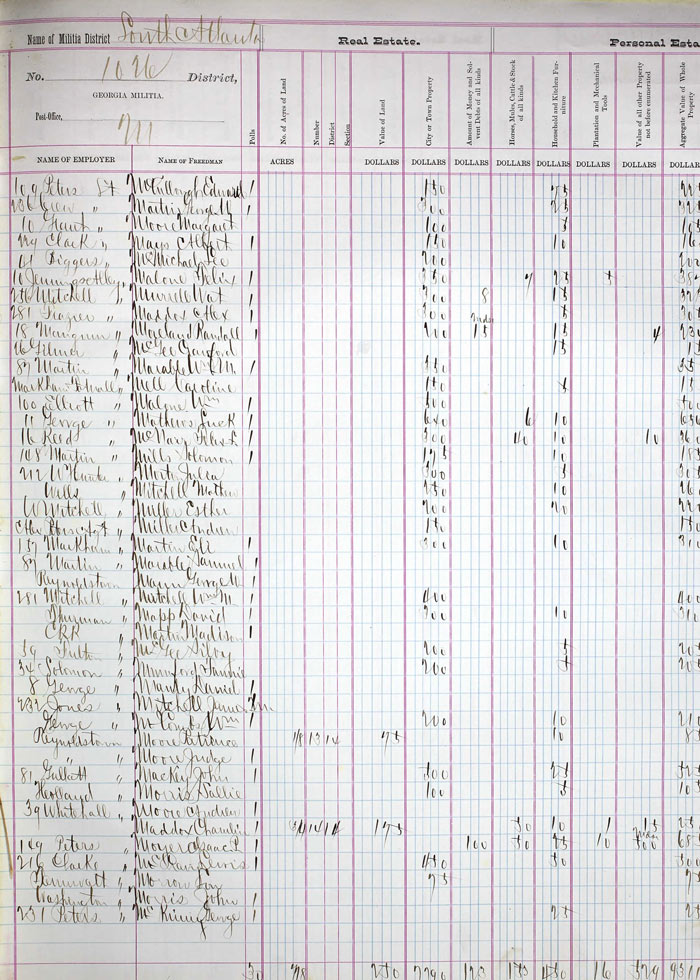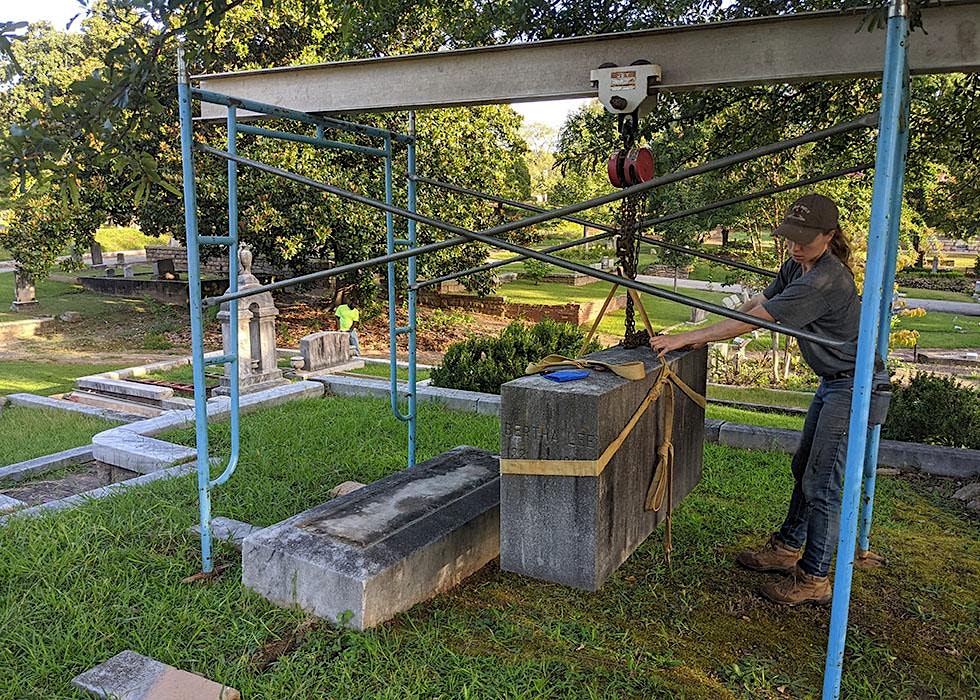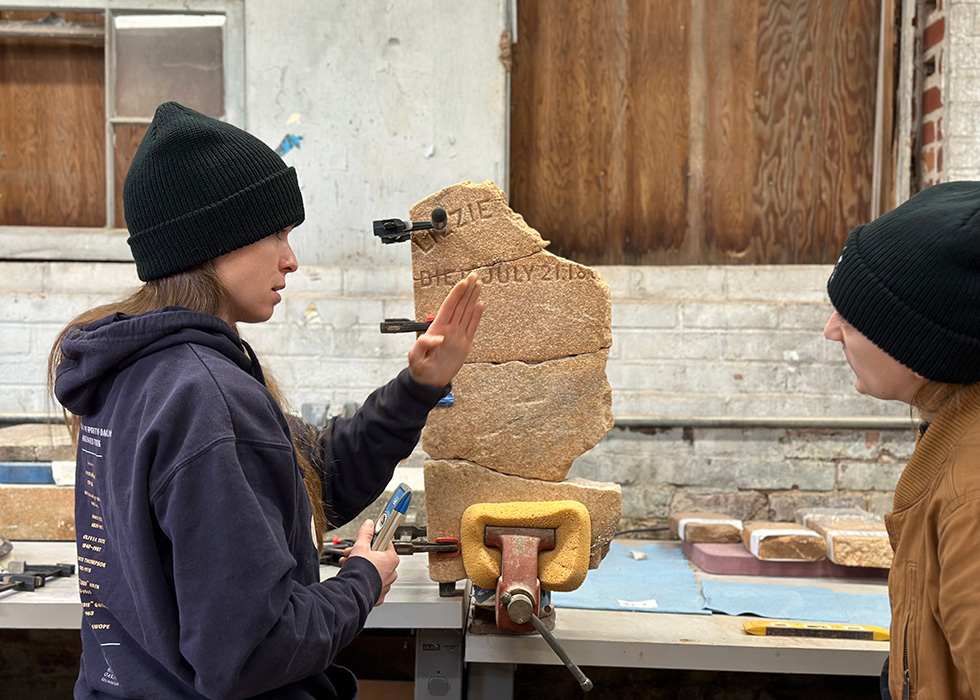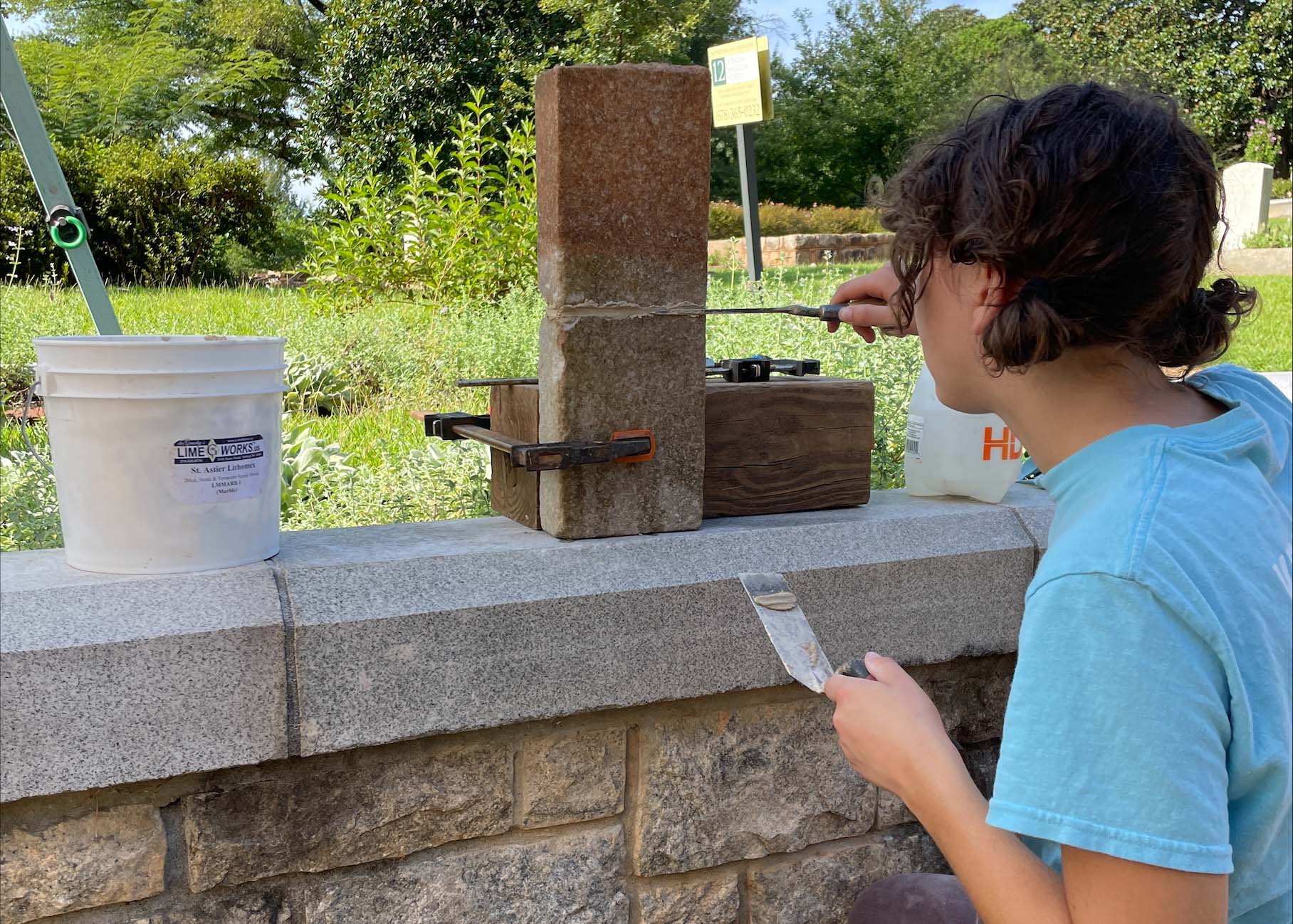
Repairing a Headstone Leads to Uncovering Hidden Stories
In restoring Oakland Cemetery, we uncover more than just historic materials. We uncover the stories of those that made up Atlanta—the grand and the humble alike.
Repairing the headstone
In February 2022, Angeline Malone’s headstone was accidentally damaged during a tree removal near her family lot in Oakland Cemetery’s historic African American Burial Grounds. Director of Preservation Ashley Shares and her team stepped in to repair it:
Angelina Malone’s monument is a “tab-in-socket” type, meaning that an upright stone is inserted vertically into a slotted base. Because of how thin (less than one inch) the marble tab portion is, her stone easily snapped at the point of insertion when a limb fell on it. The broken ends shattered and crumbled badly and the bottom remained lodged deeply in the granite socket.
First, we cleaned the pieces and assessed the damage. Because both broken ends were significantly damaged, and because of the way the bottom was lodged in the socket, there was no way to repair the tab portion, as is our usual practice. Instead, we determined that the best course of action would be to trim the jagged bottom of the tab so that it could be reset inside the socket. Conserving as much of the original materials is one of the most basic preservation principles that we try to follow at Oakland, so this decision might be somewhat controversial. Luckily, there was only about an inch of lost material, and even with removing a small section of the bottom of the stone, the inscription was not impacted. We used a T-Square to create a clean line along the bottom of the stone and carefully cut off the damaged material below it with a small grinder.
We then had to remove the broken end of the tab from the socket. Luckily, it had originally been set with lime mortar, which made removal much easier than if there had been Portland cement in the mix. We carefully used hand chisels to remove the mortar and stone chips until the socket was fully cleaned out. Then we reinserted the newly cut tab using lime mortar. To ward off additional damage, ferns Oakland’s gardens team will install ferns and other plants around the grave. This will deter both visitors and landscapers from getting too close.
Uncovering the story
Historic Oakland Foundation staff are passionate about uncovering and telling the stories of our residents, so we set out to learn more about Angelina Malone. Using census data, tax digest information, bank records, Director of Special Events Mary Fernandez pieced together a bit of the Malone’s story:
Angeline Malone and her husband Felix were both born into slavery, Felix around 1832 or 1835 and Angeline in 1841 or 1845. The couple’s future seemed full of promise at the start of their lives together. Their daughter Hattie was born in 1865, the same year as emancipation. A son, Charles (called Charlie), followed in 1869. Felix registered with the Freedman’s Bureau, and in 1867 he marked his “x” on the line to become a registered voter. He was a carpenter by trade, successful enough for Angeline to be a homemaker in the small, one-story frame house they owned at 10 Jennings Alley in what is now the Capitol Gateway neighborhood. Homeownership was a remarkable feat for those only four years separated from bondage, and the Malones were no doubt aided by Felix’s skilled trade. Neither Angeline nor Felix could read or write, but they were settled into a level of comfort that many would have found enviable. Unfortunately, tragedy soon struck the young family. Angeline passed away from unknown causes in December of 1870, and her young son Charlie would follow her into the grave just four months later, six months shy of his second birthday.
From what we can tell from the limited historic record, Felix picked himself up and moved on as best he could, growing his property holdings and learning how to read and write. Little Hattie disappears from the record but is not listed among the graves of her mother and younger brother. Perhaps she was adopted by a relative, as so often happened to motherless children at the time. By 1880, Felix married a woman named Amenia, who could also read and write. The two lived alone, first in the small frame home and later in another property Felix acquired nearby. Felix kept up his work as a carpenter, and Amenia worked as a washerwoman. In 1891, Felix passed away.

